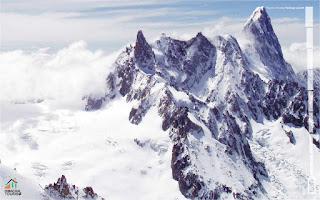Manali
Manali is a Valley nestled in the mountains of the Indian state of Himachal Pradesh near the northern end of the Kullu Valley, at an altitude of 2,050 m (6,726 ft) in the Beas River Valley. It is located in the Kullu district, about 270 km (168 mi) north of the state capital, Shimla. The small town, with a population of 8,096,[1] is the beginning of an ancient trade route to Ladakh and from there over the Karakoram Pass on to Yarkand and Khotan in the Tarim Basin. It is a popular tourist destination and serves as the gateway to Lahaul & Spiti district as well as Leh.
Manali has grown from a trading outpost/ village to a small town; as of the 2011 census of India, its population was 8,096.[1] In 2001, Manali had an official population of 6,265. Males constituted 64% of the population and females 36%. Manali had an average literacy rate of 74%, higher than the national average of 59.5%; male literacy was 80%, and female literacy was 63.9%. 9.5% of the population was under six years of age.[2] During the summer months there is a marked surge in the transients as many of them are employed in the hospitality businesses.
History
Manali is named after the Sanatan Hindu lawgiver Manu. The name Manali is regarded as the derivative of 'Manu-Alaya' which literally means 'the abode of Manu'. Legend has it that sage Manu stepped off his ark in Manali to recreate human life after a great flood had deluged the world. Manali lies in the North of Kullu Valley. The valley is often referred to as the 'Valley of the Gods'. Old Manali village has an ancient temple dedicated to sage Manu.
The British introduced apple trees in the area. The first apple orchard was set up by the British near Patlikuhl, prior to this no Apple trees grew in the area. To this day, apple—along with plum and pear—remain the best source of income for the majority of inhabitants. Both Rainbow and Brown Trout was also introduced into the rivers and streams of the area by the colonisers.
Before other luminaries started visiting Manali, the Indian nation's first Prime Minister Pt. Jawaharlal Nehru favoured this as a holiday destination in the mountains.
Environmental Concerns
Manali has witnessed a flurry of activity related to hydroelectric power and tourism. Unplanned and rampant construction has led to severe depletion of forests and pollution of river bodies, along with garbage being disposed on the side of the mountains. There has been a loss of habitat to various species of fauna, not limited to the Himalayan Monal, incidentally the state bird of Himachal Pradesh. This prompted the National Green Tribunal to intervene and limit vehicular movement on the popular Manali - Rohtang Pass highway, as well as Solang Valley. This has somewhat arrested the damage, however a lot still needs to be done.







